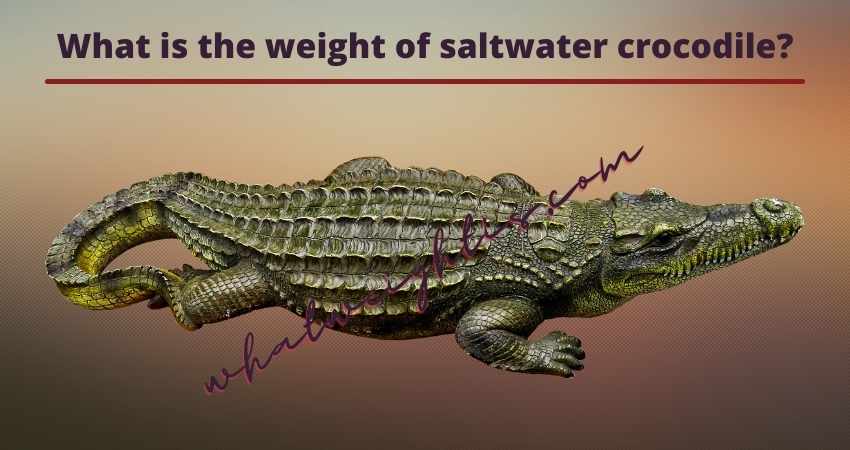Nature is full of amazing species, each one more intriguing than the previous. In this amazing world, the saltwater crocodile (Crocodylus porosus) symbolises primal force and extraordinary adaption. This apex predator dominates its complex ecosystems and is one of the heaviest reptiles on Earth.
A Look at Saltwater Crocodiles
Let’s examine the saltwater crocodile before discussing its weight. The saltwater crocodile, known as the “salty” or “salties,” is the largest living reptile and a notable crocodilian. These highly adaptable invertebrates live in brackish and salty areas of the Indo-Pacific and Northern Australian coasts.
Saltwater crocodiles are formidable predators with streamlined bodies, powerful jaws, and a vise-like bite force. They have developed over millions of years to be great ambush hunters, hiding beneath the water’s surface to surprise fish, birds, and large mammals. They are even more powerful since they can launch themselves from the water at high speed to seize food at the water’s edge.

Hitting the Heavy Giants
Saltwater crocodiles are impressively large due of their weight. Due to age, sex, and food availability, saltwater crocodile weight can vary greatly. Male saltwater crocodiles are bigger and heavier than females and can develop into adulthood.
Mature male saltwater crocodiles weigh 800–2,000 kilogrammes (1,764–4,409 pounds). However, extraordinary people have reached considerably larger weights. In places with plenty of prey, male saltwater crocodiles can weigh over 1,000 kilogrammes (2,204 pounds).
Females are smaller than males but not tiny. Adult female saltwater crocodiles weigh 200–500 kg (441–1,102 lb). Males and females differ in size due to many variables, including reproduction energy needs.
What is the weight of crocodile?
Growth and Development
Saltwater crocodiles’ extraordinary growth shows their adaptability. Nests created by mothers incubate eggs into hatchlings. Mounds of vegetation and mud create a sturdy environment for incubating eggs. After hatching, hatchlings have powerful jaws and strong camouflage.
Young crocodiles moult to fit their growing bodies. Genetics and environment affect their growth rate. With enough food and good environment, growth can increase.
The Value of Conservation
Researchers and wildlife enthusiasts love saltwater crocodiles, but their weight and size help balance their ecosystems. As apex predators, saltwater crocodiles control species numbers, limiting overgrazing and maintaining ecological balance.
These gorgeous species have struggled because to habitat degradation, hunting, and human involvement. The implementation of conservation initiatives plays a crucial role in safeguarding the continued existence of these species and the maintenance of the ecological systems they occupy. Saltwater crocodiles are legally protected in numerous regions, with initiatives implemented to enhance public understanding of their ecological significance and mitigate human-wildlife conflicts.
In conclusion
The weight of the saltwater crocodile exemplifies the remarkable diversity and intricacy of Earth’s inhabitants. The apex predators, with their notable growth and development, play a crucial part in upholding the equilibrium of their respective ecosystems, thereby captivating our curiosity and enhancing our comprehension of the natural realm.
As our understanding of saltwater crocodiles deepens, it is imperative that we acknowledge our duty to safeguard and conserve these formidable creatures for future generations. By comprehending the significance and acknowledging the role they have within the complex fabric of existence, individuals can actively participate in the continuous endeavours for conservation, which strive to protect their forthcoming existence and the fragile habitats they inhabit.
Mr. Jahangir Alam is an Electrical & Electronics Engineer with a wide range of experience in several fields of Engineering. He finds engineering articles to be very interesting, and that is why he likes to write them. To know more about him, please click here.

